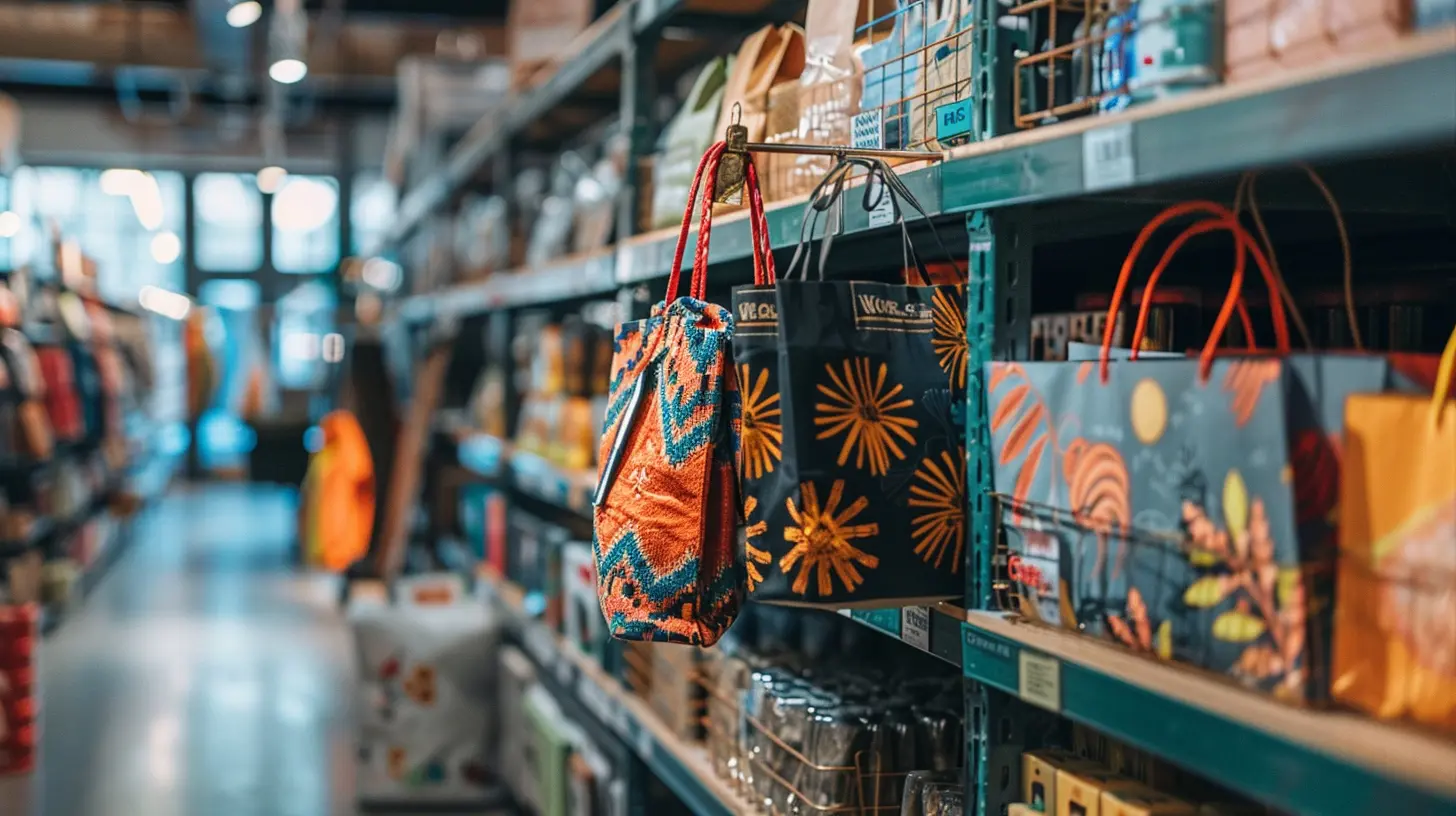How Subscription Models Are Changing Online Retail
6 May 2025
In recent years, the way we shop has drastically transformed. Gone are the days when you’d just head to a store, buy what you need, and leave. Today, with a few taps on your phone or clicks on your desktop, you can subscribe to almost anything — from essentials like groceries to niche products like personalized pet food. This shift is no accident. The subscription model is steadily taking over online retail and reshaping how businesses sell and how consumers buy.
But why is this happening? And what makes subscription-based retail so appealing to both businesses and consumers? Let’s dive into it.

What Is a Subscription Model?
Before we get into how subscription models are changing online retail, let’s first get clear on what this model really is.A subscription model is a business model where customers pay a recurring fee, typically monthly or annually, to receive products or services on a regular basis. This could be anything from streaming services like Netflix or Spotify to physical products like meal kits or shaving supplies.
The idea is straightforward: instead of a one-time purchase, customers sign up for long-term access or delivery of products. This provides companies with a predictable revenue stream and keeps customers coming back.

The Rise of Subscription Boxes
You’ve probably heard of subscription boxes like Birchbox, HelloFresh, and Dollar Shave Club. These companies have been pioneers in the subscription model, delivering curated, personalized experiences directly to your doorstep.The beauty of subscription boxes is that they often offer a sense of surprise and delight. Imagine receiving a monthly box filled with curated beauty products you’ve never tried before, or gourmet snacks from around the world. It feels like a mini gift to yourself every month! Plus, it saves time—you don’t have to go out and find these things yourself.
Why Do People Love Subscription Boxes?
1. Convenience: Life gets busy. Subscription boxes make things easier by delivering what you need (or didn’t know you needed) right to your door.2. Personalization: Many subscription services use data to tailor the products to your preferences. It feels like the service knows you better every month.
3. Value: Often, the subscription price is cheaper than if you were to buy each item individually. Plus, there’s the added value of discovery — trying new things without the hassle of shopping around.
4. Consistency: Whether it’s your daily vitamins or your pet’s food, you don’t have to worry about running out. It’s always there when you need it.

Why Retailers Are Embracing Subscription Models
So, what’s the big deal for retailers? Why are they jumping on the subscription bandwagon? Well, it turns out there are several benefits that make this model super attractive for businesses.1. Predictable Revenue Stream
One of the most significant advantages for retailers is the predictability of income. Unlike one-off purchases, where customer behavior can be erratic, subscriptions create a steady, recurring revenue stream. This makes it easier for companies to forecast sales, manage inventory, and plan long-term strategies.Imagine running a business where you know, month after month, exactly how much money is coming in. That’s the dream for most companies, and the subscription model delivers it.
2. Customer Retention
In traditional retail, the challenge is often getting customers to come back. With a subscription model, however, businesses essentially turn their customers into long-term users. It’s a built-in retention strategy. Once someone signs up for a service, they’re more likely to stick around for months or even years.3. Customer Data and Insights
Subscription models give retailers valuable insights into their customers’ habits. They can track how often people use their products, what items they prefer, and how they engage with the service. This data allows businesses to refine their offerings, improve customer satisfaction, and even roll out new products based on demand.4. Lower Marketing Costs
Since subscription models focus on building long-term relationships with customers, companies don’t need to spend as much on marketing compared to traditional retail businesses. Once someone subscribes, they’re in for the long haul. Thus, businesses can focus on retention rather than constantly acquiring new customers.5. Cross-Selling and Upselling
Because businesses have a more intimate relationship with their customers, they can more easily recommend new products or services. For example, a beauty subscription might notice you love skincare and offer you a premium skincare package. This not only enhances the customer experience but also boosts revenue.
Types of Subscription Models in Retail
While the idea of “subscription” might immediately make you think of services like Netflix, there are actually a few different ways the model can be applied to retail. Let’s break them down.1. Product Subscription Boxes
We’ve already touched on this, but it’s worth repeating. Product subscription boxes are a huge part of the subscription economy. They’re usually curated selections of products sent out periodically, such as monthly or quarterly.Examples:
- Birchbox (beauty products)
- BarkBox (pet supplies)
- Blue Apron (meal kits)
2. Replenishment Subscriptions
These subscriptions are all about convenience. If you’re someone who hates running out of essentials, replenishment subscriptions are a lifesaver. These services deliver things like household supplies, toiletries, vitamins, or food items right when you need them.Examples:
- Amazon Subscribe & Save (household goods)
- Harry’s (razor blades)
- Huel (meal replacement shakes)
3. Digital Subscriptions
While not a product in the traditional sense, digital subscriptions have become a massive part of online retail. These include everything from cloud storage services to software subscriptions.Examples:
- Dropbox (cloud storage)
- Adobe Creative Cloud (design software)
- Spotify (music streaming)
4. Access-Based Subscriptions
Some businesses offer “access” rather than a physical product. Think of services where you pay for exclusive memberships or perks.Examples:
- Amazon Prime (free shipping, Prime Video, etc.)
- Costco Membership (access to discounted goods)
- ClassPass (gym and fitness class memberships)
How Subscription Models Are Shaping Consumer Behavior
As retailers shift to subscription models, consumers are also changing how they shop and think about ownership. There’s a clear shift from buying products outright to paying for the ongoing use of a product or service.1. The Shift From Ownership to Access
We’re moving into an era where people don’t necessarily want to own things; they just want access to them. This is especially apparent with services like Spotify or Netflix, where you don’t own the music or shows, but you can access them whenever you want.The same logic is now being applied to physical products. Instead of buying a razor every month, you subscribe to a service that ensures you’ll always have fresh blades. Need new clothes? Some subscription services even send you a curated wardrobe every season, eliminating the need to own too many items at once.
2. Fewer, But Better Purchases
Subscription models encourage consumers to be more intentional with their purchases. Instead of buying several items you may or may not need, subscription services curate high-quality products based on your preferences. This shift can lead to fewer, but more meaningful, purchases.3. Loyalty and Engagement
Subscriptions naturally build a strong sense of loyalty. Customers tend to engage more with brands they subscribe to because they’re receiving regular value from them. Whether it’s a monthly newsletter, exclusive deals, or a personalized product selection, subscribers feel like they’re part of a community.
The Challenges of Subscription Models
Of course, no model is perfect, and the subscription-based retail model comes with its own set of challenges.1. Subscription Fatigue
As more and more companies adopt this model, consumers are starting to experience what’s known as subscription fatigue. With so many services vying for a spot in your monthly budget, it’s easy to get overwhelmed. People are becoming more selective about which subscriptions they stick with and which they cancel.2. High Churn Rates
While subscription models are great for customer retention, they also come with the risk of churn — that is, customers canceling their subscriptions. If a service fails to provide ongoing value, or if a customer’s financial situation changes, they’re likely to cancel, leaving the business in search of new subscribers.3. Upfront Costs
Subscription models often require businesses to invest heavily upfront. Whether it’s creating the technology to support recurring payments or building out logistics to manage regular deliveries, there are significant upfront costs to consider.The Future of Subscription Models in Retail
There’s no doubt that subscription models are here to stay, but they will continue to evolve. As technology advances, we’ll likely see even more personalization, making the subscription experience feel tailored to each individual. AI and machine learning could play a big role in analyzing consumer preferences and predicting future needs.Moreover, as sustainability becomes a growing concern, we might see a rise in eco-friendly subscription services that focus on reducing waste and offering reusable or recyclable products.
Final Thoughts
Subscription models have undoubtedly changed the landscape of online retail. From convenience and personalization to predictable revenue and customer loyalty, the benefits are clear. But as with all business models, it’s essential to keep adapting to consumer needs and market trends. Whether you're a retailer considering jumping into the subscription game or a consumer deciding which boxes to sign up for, one thing is certain: subscriptions aren’t just a trend—they're the future of retail.all images in this post were generated using AI tools
Category:
E CommerceAuthor:

Adeline Taylor
Discussion
rate this article
7 comments
Tatianna McNeal
Great read! Subscription models are truly revolutionizing online retail, making shopping more enjoyable and convenient for everyone. It’s exciting to see how these innovations can enhance our shopping experiences and offer us unique products we never knew we needed. Keep it up!
May 17, 2025 at 11:06 AM

Adeline Taylor
Thank you! I'm glad you enjoyed the article. It's exciting to explore how subscription models are reshaping the shopping landscape!
Wendy Cummings
Exciting shifts in retail dynamics ahead!
May 13, 2025 at 9:02 PM

Adeline Taylor
Thank you! Exciting times indeed as subscription models redefine the shopping experience!
Siena McElhinney
Great insights on the evolving landscape of online retail! Subscription models not only enhance customer loyalty but also provide businesses with predictable revenue. Excited to see how these trends will continue to shape our shopping experiences in the future!
May 12, 2025 at 6:52 PM

Adeline Taylor
Thank you! I'm glad you found the insights valuable. It's an exciting time for online retail, and subscription models are definitely reshaping the way we shop.
Upton Fields
Embrace change—subscription models redefine convenience in shopping!
May 12, 2025 at 10:27 AM

Adeline Taylor
Absolutely! Subscription models offer unparalleled convenience, transforming the shopping experience by providing tailored products and services right to our doors.
Landon McWilliams
Subscription models are reshaping online retail by enhancing customer loyalty and providing predictable revenue, but they can complicate inventory management.
May 10, 2025 at 2:49 AM

Adeline Taylor
Thank you for your insightful comment! You're absolutely right—while subscription models boost loyalty and revenue predictability, they do pose unique challenges for inventory management. Balancing these factors is key for success in the evolving retail landscape.
Kismet Rosales
Great insights on subscription models! It's fascinating to see how they enhance customer loyalty and streamline inventory management. I'm curious about potential challenges retailers face in implementing these models effectively. Keep up the good work!
May 8, 2025 at 10:35 AM

Adeline Taylor
Thank you for your feedback! You're right—while subscription models offer many benefits, challenges like customer acquisition, retention, and managing inventory can be significant. I appreciate your interest!
Chantal Schultz
Oh sure, because who doesn’t want to commit to a monthly payment for things they might only use once? Nothing screams “freedom” like being tied to a subscription for that novelty item you never really needed!
May 6, 2025 at 12:25 PM

Adeline Taylor
I understand your concern! Subscription models can feel limiting, but they also offer flexibility and variety for those who enjoy trying new products without a long-term commitment. It’s all about finding what works best for you!
MORE POSTS

Understanding Drone Flight Modes and When to Use Them

Top Tips for First-Time Drone Pilots

Are Wireless Earbuds as Durable as Wired Alternatives?

Digital Assistants in Healthcare: A New Era of Patient Support

How Quantum Computing Will Shape the Future of Cloud Computing

The Importance of Cybersecurity in E-Commerce